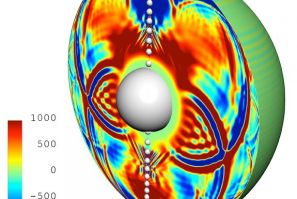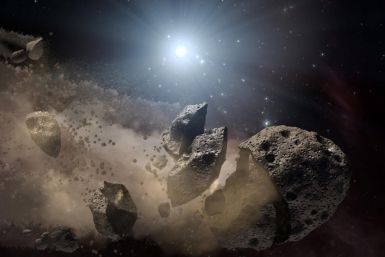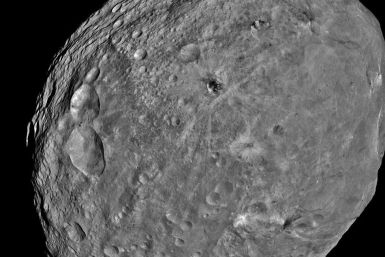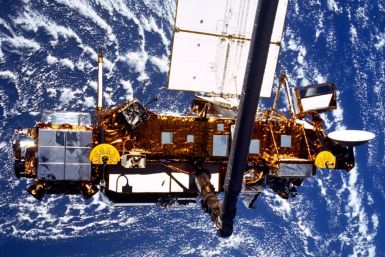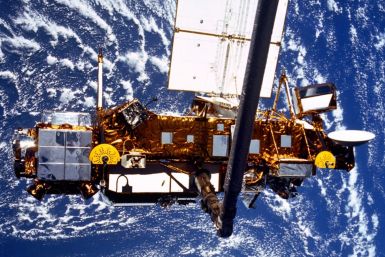Observations from NASA's Wide-Field Infrared Survey Explorer (WISE) mission suggest that the family of asteroids commonly blamed for the extinction of the dinosaurs is not the culprit.
In the year 2007, a study using visible-light data from ground-based telescopes first suggested that the remnant of a huge asteroid, known as Baptistina, was the reason for the extinction of dinosaurs from Earth's surface.
A dead NASA satellite is expected to re-enter Earth's atmosphere on Friday, Sept. 23, though there is absolutely no idea as to where it is going to fall according to the U.S. space agency.
Almost six years after ceasing operation, NASA's defunct 6.5-ton Upper Atmosphere Research Satellite is expected to plummet to Earth on Friday. But the U.S. space agency still has no idea as to where exactly it would fall.
Scientists rule out the idea that remnants of the Baptistina asteroid killed the dinosaurs.
A defunct NASA satellite is expected to plunge back to earth, raising concerns that blazing hot debris may shower down on the unsuspecting terrestrial population.
NASA has a plan to get astronauts back into space.
NASA has announced that it is currently testing an element of the sunshield that will be used to protect the James Webb Space Telescope's mirrors and instruments when it embarks on its mission to observe the most distant objects in the universe.
NASA may have retired its Space Shuttle Program, but astronauts are still finding creative ways of bringing images from space down to earth.
For weeks NASA's defunct 7-ton research satellite has been falling towards Earth with the potential of shattering on the earth's surface and raining debris on densely populated areas, but the Space agency has confirmed the impeding threat saying it is set to crash by the end of the week.
Temperatures will be seasonal this week with some areas having a chance of rain and slight odds of falling NASA satellite debris.
Toward fulfilling the mission to observe the most distant objects in the universe, NASA's James Webb Space Telescope was newly dressed with giant mirrors coated with gold - a spectacularly new technology fit for its grand mission.
An uncommon Saturn-mass planet consisting of half rock and half gas that is located some 200 light years away from Earth with two suns has been discovered by Kepler spacecraft.
A defunct NASA satellite, ready to fall back to Earth, will make its final plunge on Friday, Sept. 23, though there is absolutely no idea as to where exactly it would fall, according to the U.S. space agency.
A defunct NASA satellite is expected to re-enter Earth's atmosphere on Friday, Sept. 23, according to the U.S. space agency.
Astronomers have announced the discovery of an uncommon planet that is located some 200 light years away from Earth with two suns.
In a preparation for future space exploration, a group of NASA's diving crew will live in Aquarius underwater research laboratory located near Key Largo, Florida during October.
The Russian Soyuz capsule carrying the three out of six crew members returning from the International Space Station touched down safely on Friday at the central grasslands of Kazakhstan, but not without a drama.
A dead NASA satellite will be plunging back to the Earth in about a week, around September 23, though there is absolutely no idea as to where it is going to fall.
Thanks to NASA's Kepler telescope, the 30-year-old Star Wars Tatooine fantasy is now a fact as it has discovered a new planet some 200 light years away from Earth, which is claimed to be orbiting two stars.
Kepler-16b was seen orbiting two stars, about 200 light-years from Earth.Scientists say that the discovery of this Saturn-sized, circumbinary planet shows just how much diversity there are among the planets in our galaxy.
Space officials from the U.S. have said that they are expecting a 6.5 -ton dead satellite to fall to Earth in almost a week.




